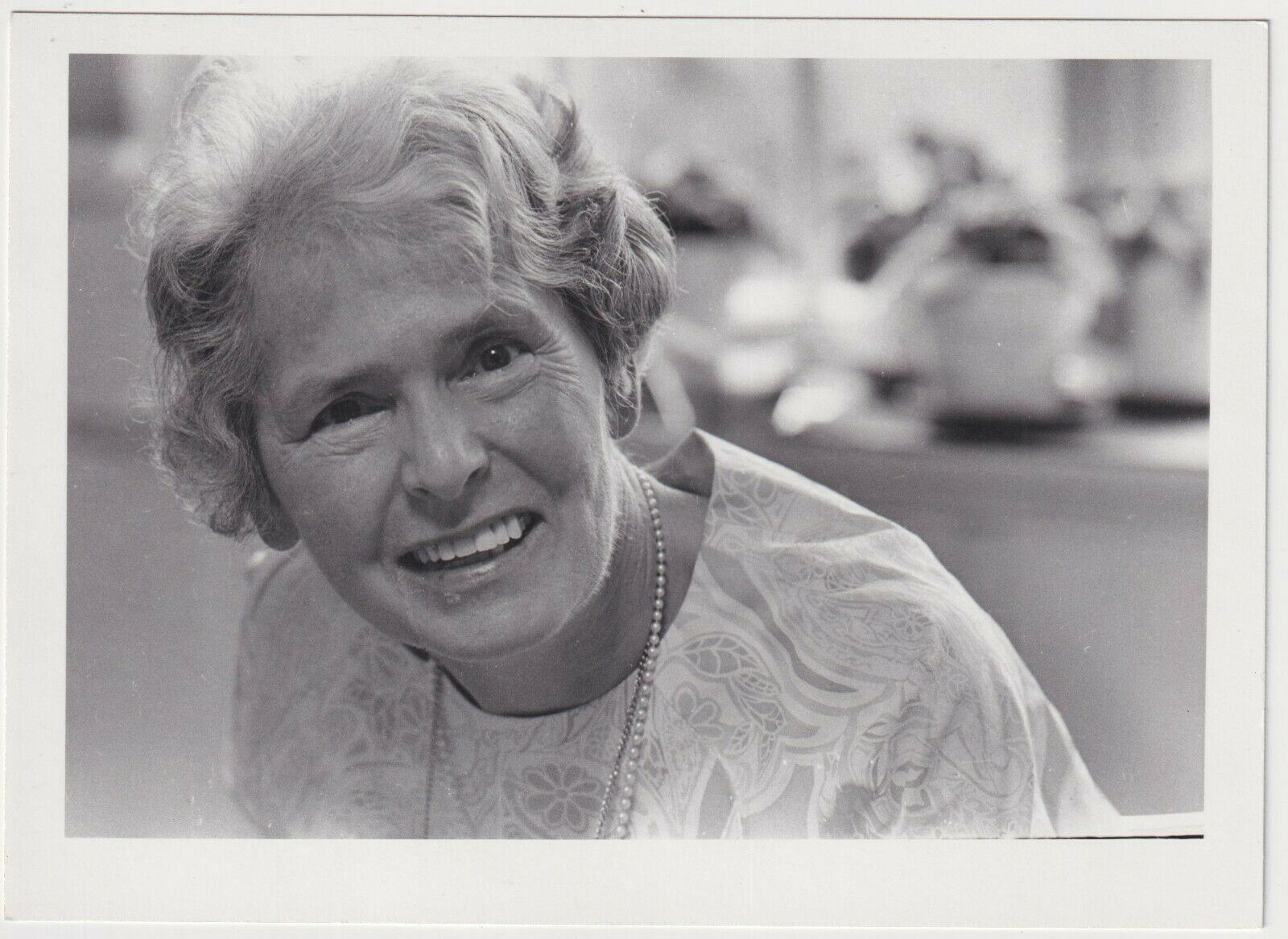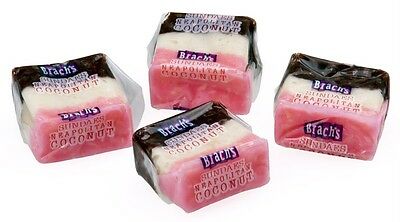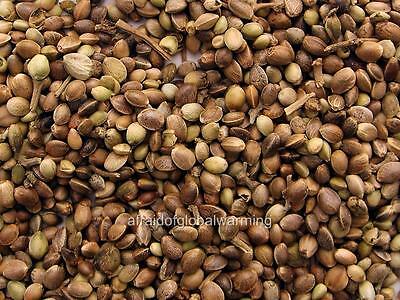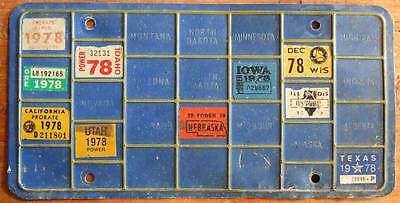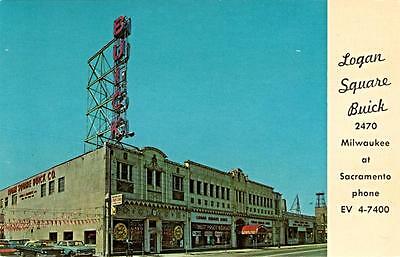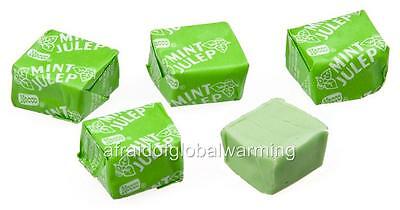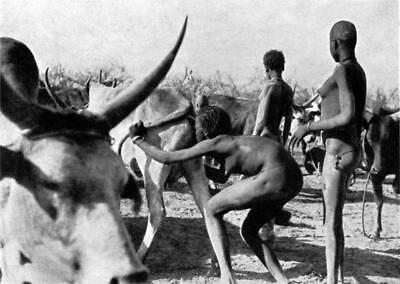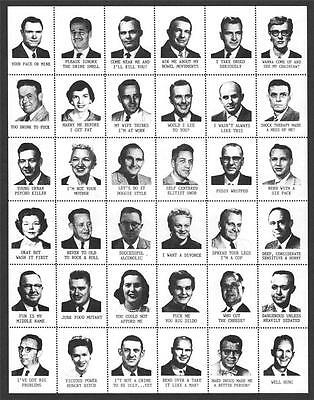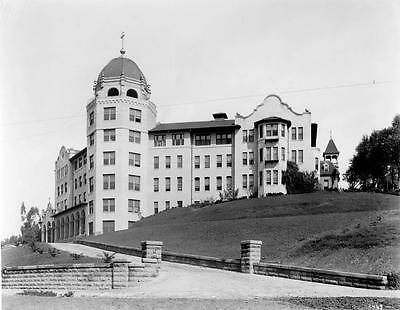-40%
Portrait of Margaret Bourke-White : 1970 by Leslie Teicholz VINTAGE photo
$ 15.83
- Description
- Size Guide
Description
OFFERED WITHOUT RESERVEAn
excellent
classic iconic
Vintage
museum quality
gelatin silver print photograph of legendary photojournalists Margaret Bourke-White at Bourke-White's Connecticut home
. Photographed by Leslie Teicholz. Circa 1970. Photographer's inkstamp on verso..
Leslie Teicholz was studio assistant to W.Eugene Smith in the 1960s- early 1970s and helped to print and prepare the landmark exhibition "Let Truth be the Prejudice."
PROVENANCE: from the artist to Howard C. Daitz circa 1971; purchased circa 1989.
The gelatin silver print measures approximately 5" by 7".
This item is in excellent or better condition, with excellent tonality and print quality
Please review the photographs carefully as they are an essential part of the description.
KEYWORDS: Photographers Photojournalists Life Magazine WW2 WWII Magnum Photojournalism Photographic Equipment Leica Leicas Nikons
PLEASE READ BELOW!
ALL NON-USA RESIDENTS
: SHIPPING IS
.00
BY STANDARD INTERNATIONAL MAIL FOR FLAT ENVELOPES AND SMALL PACKAGES ONLY. PACKAGE POSTAL FEES ARE DETERMINED BY THE PACKAGE'S SIZE AND WEIGHT. PLEASE KNOW A
CUSTOMS DECLARATION
IS REQUIRED ON ALL INTERNATIONAL PACKAGES. INSURED PACKAGES MUST BE SENT PARCEL POST AND THE FEE IS
0.00
PLUS THE INSURANCE FEE
.
WINNING BIDDERS ACCEPT ALL SHIPPING RISKS FOR UNINSURED INTERNATIONAL PACKAGES
. WINNING BIDDERS WILL RECEIVE AN EBAY INVOICE OR PERSONAL EMAIL FROM ME AFTER THE AUCTION CLOSES REGARDING PAYMENT AND SHIPPING DETAILS. PLEASE NOTE THAT I AM OBLIGATED UNDER U. S. LAW TO DECLARE THE FULL VALUE OF A PACKAGE SHIPPED OUT OF THE UNITED STATES. PLEASE DO NOT ASK ME TO BREAK THE LAW AND DO OTHERWISE.
ALL USA RESIDENTS
: PAYMENT MUST BE MADE WITHIN THREE DAYS BY PAYPAL. ANY OTHER ARRANGEMENTS MUST BE MADE WITH ME WELL IN ADVANCE! NO EXCEPTIONS!
UNLESS OTHERWISE STATED SHIPPING IS
$ 8.00
IN THE UNITED STATES BY PRIORITY MAIL WITH DELIVERY CONFIRMATION.
I CAN COMBINE SHIPPING ON MULTIPLE PURCHASES CLOSING THE SAME WEEK, BUT YOU MUST ASK AND WAIT FOR AN INVOICE PRIOR TO PAYMENT OR ADDITIONAL FEES WILL BE INCURRED
.
INSURANCE REQUIRED ON SHIPMENTS ABOVE $ 100.00.
Margaret Bourke-White
From Wikipedia, the free encyclopedia
Jump to navigation
Jump to search
Margaret Bourke-White
Bourke-White interviewed on
Person to Person
, 1955
Born
Margaret White
June 14, 1904
The Bronx
, New York City
Died
August 27, 1971
(aged 67)
Stamford, Connecticut
, US
Nationality
American
Alma mater
Columbia University
University of Michigan
Purdue University
Western Reserve University
Cornell University
Occupation
Photographer,
photojournalist
Spouse(s)
Everett Chapman
(
m.
1924;
div.
1926)
Erskine Caldwell
(
m.
1939;
div.
1942)
Signature
Margaret Bourke-White
(
/
ˈ
b
ɜːr
k
/
; June 14, 1904 – August 27, 1971) was an American
photographer
and
documentary photographer
.
[1]
She is best known as the first foreign photographer permitted to take pictures of Soviet industry under the Soviet's
five-year plan
,
[2]
the first American female war photojournalist, and having one of her photographs (the construction of
Fort Peck Dam
) on the cover of the first issue of
Life magazine
.
[3]
She died of
Parkinson's disease
about eighteen years after developing symptoms.
Contents
Early life
[
edit
]
Margaret Bourke-White,
[4]
born
Margaret White
[5]
in
the Bronx
, New York,
[6]
was the daughter of Joseph White, a non-practicing
Jew
whose father came from
Poland
, and Minnie Bourke, who was of Irish
Catholic
descent.
[7]
She grew up near
Bound Brook
, New Jersey (the
Joseph and Minnie White House
in
Middlesex
), and graduated from
Plainfield High School
in
Union County
.
[6]
[8]
From her naturalist father, an engineer and inventor, she claimed to have learned perfectionism; from her "resourceful homemaker" mother, she claimed to have developed an unapologetic desire for self-improvement."
[9]
Her younger brother,
Roger Bourke White
, became a prominent Cleveland businessman and high-tech industry founder, and her older sister, Ruth White, became well known for her work at the
American Bar Association
in Chicago,
Ill.
[7]
Roger Bourke White described their parents as "
Free thinkers
who were intensely interested in advancing themselves and humanity through personal achievement," attributing the success of their children in part to this quality. He was not surprised at his sister Margaret's success, saying "[she] was not unfriendly or aloof".
Margaret's interest in photography began as a hobby in her youth, supported by her father's enthusiasm for cameras.
[6]
Despite her interest, in 1922, she began studying
herpetology
at
Columbia University
, only to have her interest in photography strengthened after studying under
Clarence White
(no relation).
[6]
She left after one semester, following the death of her father.
[5]
She transferred colleges several times, attending the
University of Michigan
(where she became a member of
Alpha Omicron Pi
sorority),
[10]
Purdue University
in
Indiana
, and
Western Reserve University
in
Cleveland
, Ohio.
[5]
Bourke-White ultimately graduated from
Cornell University
with a Bachelor of Arts degree in 1927, leaving behind a photographic study of the rural campus for the school's newspaper, including photographs of her famed dormitory,
Risley Hall
.
[5]
[6]
[11]
A year later, she moved from
Ithaca, New York
, to
Cleveland
, Ohio, where she started a commercial photography studio and began concentrating on architectural and industrial photography.
In 1924, during her studies, she married Everett Chapman, but the couple divorced two years later.
[9]
Margaret White added her mother's surname, "Bourke" to her name in 1927 and hyphenated it.
[5]
Architectural and commercial photography
[
edit
]
One of Bourke-White's clients was Otis Steel Company. Her success was due to her skills with both people and her technique. Her experience at Otis is a good example. As she explains in
Portrait of Myself
, the Otis security people were reluctant to let her shoot for many reasons.
Firstly, steel making was a defense industry, so they wanted to be sure national security was not endangered. Second, she was a woman, and in those days, people wondered if a woman and her delicate cameras could stand up to the intense heat, hazard, and generally dirty and gritty conditions inside a steel mill. When she finally got permission, technical problems began.
Black-and-white film
in that era was sensitive to blue light, not the reds and oranges of hot steel (In the words of her collaborator, the ambient red-orange light had no "
actinic value
"), so she could see the beauty, but the photographs were coming out all black.
My singing stopped when I saw the films. I could scarcely recognize anything on them. Nothing but a half-dollar-sized disk marking the spot where the molten metal had churned up in the ladle. The glory had withered.
I couldn't understand it. "We're woefully underexposed," said Mr. Bemis. "Very woefully underexposed. That red light from the molten metal looks as though it's illuminating the whole place. But it's all heat and no light. No actinic value."
She solved this problem by bringing along a new style of
magnesium
flare
, which produces white light, and having assistants hold them to light her scenes. Her abilities resulted in some of the best steel factory photographs of that era, which earned her national attention. "To me... industrial forms were all the more beautiful because they were never designed to be beautiful. They had a simplicity of line that came from their direct application of purpose. Industry... had evolved an unconscious beauty – often a hidden beauty that was waiting to be discovered" Margaret Bourke-White, Portrait of Myself (New York: Simon and Schuster, 1963), 49.
Photojournalism
[
edit
]
"
Kentucky Flood
", February 1937
In 1929, Bourke-White accepted a job as associate editor and staff photographer of
Fortune
magazine, a position she held until 1935.
[5]
In 1930, she became the first Western photographer allowed to take photographs of Soviet industry.
[5]
She was hired by
Henry Luce
as the first female photojournalist for
Life
magazine in 1936.
[5]
She held the title of staff photographer until 1940, but returned from 1941 to 1942,
[5]
and again in 1945, after which she stayed through her semi-retirement in 1957 (which ended her photography for the magazine)
[3]
and her full retirement in 1969.
[5]
Her photographs of the construction of the
Fort Peck Dam
were featured in
Life'
s first issue, dated November 23, 1936, including the cover.
[12]
This cover photograph became such a favorite (see
[13]
) that it was the 1930s' representative in the
United States Postal Service
's
Celebrate the Century
series of commemorative postage stamps. "Although Bourke-White titled the photo,
New Deal, Montana: Fort Peck Dam
, it is actually a photo of the spillway located three miles east of the dam," according to a
United States Army Corps of Engineers
web page.
[14]
During the mid-1930s, Bourke-White, like
Dorothea Lange
, photographed drought victims of the
Dust Bowl
. In the February 15, 1937 issue of
Life
magazine, her famous photograph of black flood victims standing in front of a sign which declared, "World's Highest Standard of Living", showing a white family, was published. The photograph later would become the basis for the artwork of
Curtis Mayfield
's 1975 album,
There's No Place Like America Today
.
Bourke-White and novelist
Erskine Caldwell
were married from 1939 to their divorce in 1942,
[5]
and collaborated on
You Have Seen Their Faces
(1937), a book about conditions in the South during the Great Depression.
She also traveled to Europe to record how Germany,
Austria
, and
Czechoslovakia
were faring under Nazism and how Russia was faring under
Communism
. While in Russia, she photographed
Joseph Stalin
as well as portraits of Stalin's mother and great-aunt when visiting
Georgia
.
World War II
[
edit
]
Bourke-White was the first known female
war correspondent
[5]
and the first woman to be allowed to work in combat zones during
World War II
. In 1941, she traveled to the
Soviet Union
just as Germany broke its pact of non-aggression. She was the only foreign photographer in Moscow when German forces invaded. Taking refuge in the
U.S. Embassy
, she then captured the ensuing firestorms on camera.
As the war progressed, she was attached to the
U.S. Army Air Force
in North Africa, then to the U.S. Army in Italy and later in Germany. She repeatedly came under fire in Italy in areas of fierce fighting. On January 22, 1943 Major Rudolph Emil Flack, Squadron and Mission Commander, piloted the lead aircraft with Margaret Bourke-White (the first female photographer/writer to fly on a combat mission) aboard his 414th Bombardment Squadron B-17F LITTLE BILL (41-24400) and bombed the El Aouina Airdrome in Tunis, Tunisia. On this bombing raid, she describes the field of 130 enemy planes as "one bright orange flash." Refer to the March 1, 1943
Life
article titled
Bourke-White Goes Bombing
. The navigator on this flight was Lieutenant Abraham J. Dreiseszun who ended up rising through the ranks of the U.S. Air Force to become a Major General.
"The woman who had been torpedoed in the
Mediterranean
, strafed by the
Luftwaffe
, stranded on an
Arctic
island, bombarded in Moscow, and pulled out of the
Chesapeake
when her chopper crashed, was known to the
Life
staff as 'Maggie the Indestructible.'"
[3]
This incident in the Mediterranean refers to the sinking of the England-Africa bound British troopship
SS Strathallan
that she recorded in an article, "Women in Lifeboats", in
Life
, February 22, 1943. She was disliked by General
Dwight D Eisenhower
but was friendly with his chauffeur/secretary, Irishwoman
Kay Summersby
, with whom she shared the lifeboat.
In the spring of 1945, she traveled throughout a collapsing Germany with
Gen.
George S. Patton
. She arrived at
Buchenwald
, the notorious
concentration camp
, and later said, "Using a camera was almost a relief. It interposed a slight barrier between myself and the horror in front of me." After the war, she produced a book entitled
Dear Fatherland, Rest Quietly
, a project that helped her come to grips with the brutality she had witnessed during and after the war.
The editor of a collection of Bourke-White's photographs wrote: "To many who got in the way of a Bourke-White photograph—and that included not just bureaucrats and functionaries but professional colleagues like assistants, reporters, and other photographers—she was regarded as imperious, calculating, and insensitive."
[3]
Korean War
[
edit
]
She served as a photographer of
Life
during
Korean War
.
[15]
Recording the India–Pakistan partition violence
[
edit
]
An iconic photograph that Margaret Bourke-White took of
Mohandas K. Gandhi
in 1946
Bourke-White is known equally well in both
India
and
Pakistan
for her photographs of
Dr. Bhimrao Ramji Ambedkar
at his home Rajgriha, Dadar in Mumbai on the occasion of a third impression of his book which was published in December 1940 as
Thoughts on Pakistan
(the book was republished in 1946 under the title
India's Political What's What: Pakistan or Partition of India
). These photographs were published on
Life magazine
cover. She also photographed
M. K. Gandhi
at his spinning wheel and Pakistan's founder,
Mohammed Ali Jinnah
, upright in a chair.
[16]
[17]
She also was "one of the most effective chroniclers" of the violence that erupted at the independence and
partition of India
and Pakistan, according to
Somini Sengupta
, who calls her photographs of the episode "gut-wrenching, and staring at them, you glimpse the photographer's undaunted desire to stare down horror." She recorded streets littered with corpses, dead victims with open eyes, and refugees with vacant eyes. "Bourke-White's photographs seem to scream on the page," Sengupta wrote. The photographs were taken just two years after those Bourke-White took of the newly captured
Buchenwald
.
[16]
Sixty-six of Bourke-White's photographs of the partition violence were included in a 2006 reissue of
Khushwant Singh
's 1956 novel about the disruption,
Train to Pakistan
. In connection with the reissue, many of the photographs in the book were displayed at "the posh shopping center
Khan Market
" in
Delhi
, India. "More astonishing than the images blown up large as life was the number of shoppers who seemed not to register them," Sengupta wrote. No memorial to the partition victims exists in India, according to Pramod Kapoor, head of Roli, the Indian publishing house coming out with the new book.
[16]
She had a knack for being at the right place at the right time: she interviewed and photographed
Mohandas K. Gandhi
just a few hours before his assassination in 1948.
[18]
Alfred Eisenstaedt
, her friend and colleague, said one of her strengths was that there was no assignment and no picture that was unimportant to her. She also started the first photography laboratory at
Life
magazine.
[9]
Later years and death
[
edit
]
In 1953, Bourke-White developed her first symptoms of
Parkinson's disease
.
[5]
She was forced to slow her career to fight encroaching paralysis.
[3]
In 1959 and 1961, she underwent several operations to treat her condition,
[5]
which effectively ended her tremors but affected her speech.
[3]
In 1971, she died at
Stamford Hospital
in
Stamford
, Connecticut, aged 67, from Parkinson's disease.
[4]
[5]
[19]
Bourke-White wrote an autobiography,
Portrait of Myself
, which was published in 1963 and became a bestseller, but she grew increasingly infirm and isolated in her home in
Darien
,
Connecticut
. In her living room, there "was wallpapered in one huge, floor-to-ceiling, perfectly-stitched-together black-and-white photograph of an evergreen forest that she had shot in
Czechoslovakia
in 1938". A pension plan set up in the 1950s, "though generous for that time", no longer covered her health-care costs. She also suffered financially from her personal generosity and "less-than-responsible attendant care."
[3]
Legacy
[
edit
]
Bourke-White's photographs are in the
Brooklyn Museum
, the
Cleveland Museum of Art
, the
New Mexico Museum of Art
[20]
and the
Museum of Modern Art
in New York as well as in the collection of the
Library of Congress
.
[9]
A 160-foot-long photomural she created for
NBC
in 1933, for the Rotunda in the broadcaster's
Rockefeller Center
headquarters, was destroyed in the 1950s. In 2014, when the Rotunda and Grand Staircase leading up to it were rebuilt, the photomural was faithfully recreated in digital form on the 360-degree LED screens on the Rotunda's walls. It forms one of the stops on the
NBC Studio Tour
.
